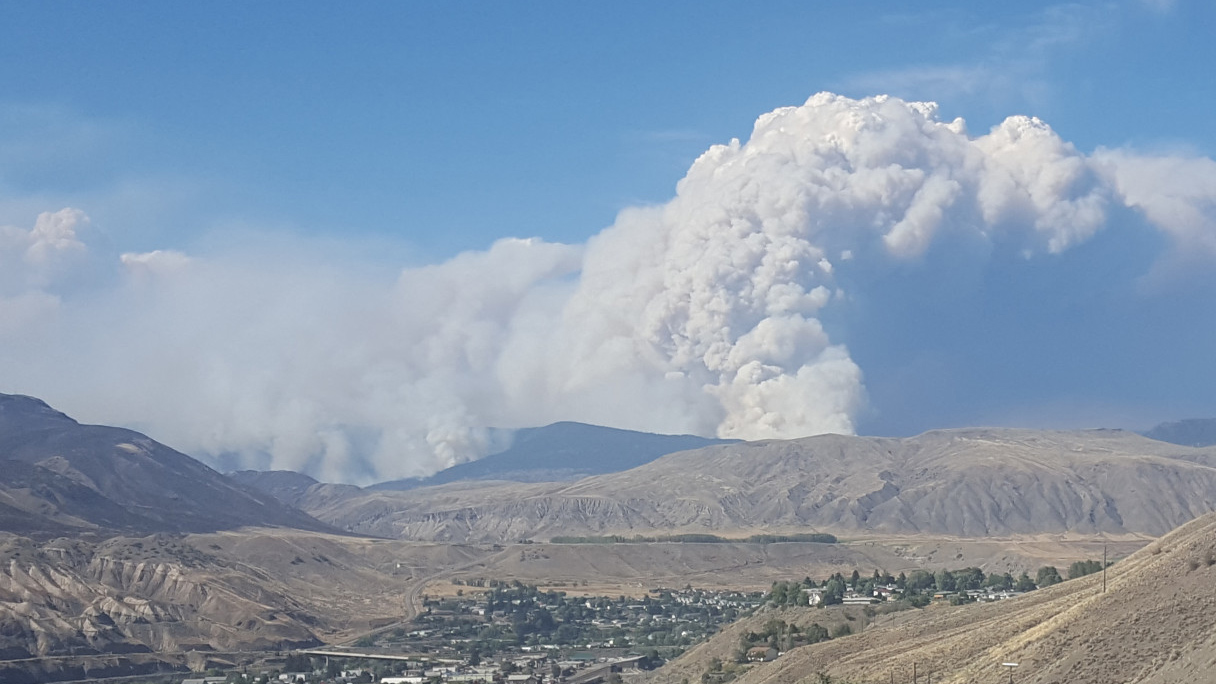An article investigating the trends of wildfires in British Columbia states that the province’s most severe wildfire seasons over the past century occurred in the last eight years. The study’s co-author, Mike Flannigan, who is also the research chair for predictive services, emergency management, and fire science here at TRU, said the number of fires in Canada and B.C. has seen significant increases—a quadrupling—since the 1960s and 1970s.
Flannigan attributed these statistics to one major factor.
“This is because of human-caused climate change,” he said. “It can’t be clearer than that.”
As we enter spring and draw closer to the summer months, it is important to keep this reality in mind. As the climate gets warmer, residents are bound to experience increases in the amount, intensity, and duration of these fires.
But how do wildfires start anyway?
From embers to infernos
Flannigan distinguished between fires caused by human activity, which usually dominate in the fall, and fires caused by lightning, which are prevalent in summer. Human-caused fires are created because of anything from campfires to burning debris, vehicles, cigarettes and even power lines.
Though human-caused fires can be managed with effective policy and public awareness campaigns, lightning-caused fires are much less predictable. Lightning is responsible for just half the fires started, but about 90% of the total area burned, making it a major player in the wildfire season.
According to Flannigan, there is a common misconception about how these fires enter our communities. Though many imagine walls of flames rolling into our neighbourhoods, the reality looks more like millions of tiny, smoldering bits of debris carried by the wind. If these embers catch on something flammable, a fire could start.
Regardless of the source, the effects of any rapidly growing wildfire will be the same.
When people picture major forest fires, they often imagine helicopters dropping large streams of water over the fire in an effort to control its spread. This image, according to Flannigan, lends itself to another generally held misconception: that firefighters can put out all fires, all the time.
“That is patently untrue,” Flannigan said. “Once a fire gets large and intense, and it’s moved to the crown of trees in what we call a crown fire, very little can be done through direct attack.”
Instead, firefighters employ other tactics like burnout operations, where a second fire is created against the wind to limit the wildfire’s fuel source.
Climate change: more warmth, more fire
As mentioned before, climate change has contributed significantly to the current trends in wildfires in B.C.
Rising temperatures are directly correlated with increased intensity of wildfires for several reasons, Flannigan illustrates.
First, an increase in global temperatures will result in longer fire seasons.
“We’re seeing fires almost burning all year,” Flannigan said. “There’s a fire that started in 2023 that’s still burning under the snow in northeastern British Columbia. They’ve overwintered for two winters now. That’s the first time I’ve seen that happen.”
A second reason is that rising warmth generates more lightning, which significantly increases the chances of a fire starting—a process he describes as ignition.
Finally, and perhaps most importantly, increased temperatures lead to drier fields and less moisture. This not only makes it so fires start and spread more easily but also makes them significantly more difficult to extinguish.
Wildfire, beware
We live in a high-risk environment, said Flannigan, and should always be prepared for the possibility of wildfires.
Beyond just the destruction of property and the potential harm to life, wildfires also cause indirect harm due to air pollution. Per a recent study published in The Lancet, about 1.53 million people die prematurely every year due to air pollution from wildfire smoke.
To curb the negative health effects of smoke, Flannigan suggests equipping our homes with air filters where possible, wearing face masks like the N95s when outdoors, and avoiding vigorous exercise during those intense wildfire periods.
In the event of an evacuation alert, where the fires have reached critical conditions, Flannigan encourages everyone to prepare a “go-bag”—an emergency kit with important items, medications, documents, etc. to make evacuating quicker and easier.
But, simply handling the after-effects of a fire is not enough. It is also important to consider the earlier stages of wildfire prevention, monitoring and reporting.
The BC Wildfire Service has been prudent in these areas and in making information public and updatable. A glance through their website presents information on the number and intensity of fires currently burning across B.C., the prevention efforts being undertaken by the service, and the ways you can report a fire to improve their databases.
To community members, Flannigan said, the first step to prevention is to respect fire.
“If you’re out in the woods and there’s a fire ban, observe it,” Flannigan said. “If there’s no ban and you have a campfire, there’s a lot of information about how to properly extinguish a fire. If you’re driving a car in dry, hot weather and all the grass is dead, don’t park in it because your mufflers can be extremely hot and can start fires.”
“And if you see a fire,” he adds, “report it right away. The sooner we know about it, the sooner we can put it out.”
2025 and beyond
It is still early days, so it is difficult to predict the upcoming wildfire season. The fires will depend on several factors—from vegetation to ignition to the weather—which cannot be accurately assessed yet. Still, Flannigan said, some models point to the possibility of an active fire season.
“I don’t expect it to be another 2023, which burned 2.84 million hectares,” Flannigan said. “But it could be a busy, smoky fire season again.”
As we face the possibility of fires this year, it is important not to lose sight of the bigger picture.
Though wildfires seem daunting, there’s more to them than destruction and displacement. Wildfires are an important aspect of the environment we live in and play a role in supporting and sustaining ecosystems.
“Fire is great at restoring biodiversity,” Flannigan said. “It’s mother nature doing her thing, and when and where possible, we should let mother nature do her thing.”

